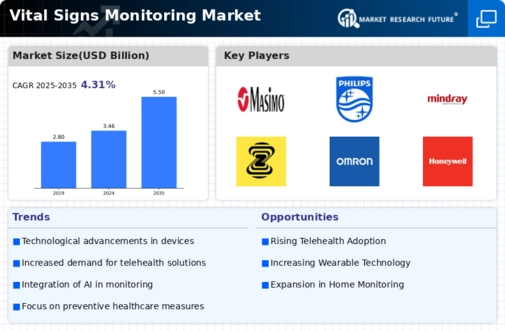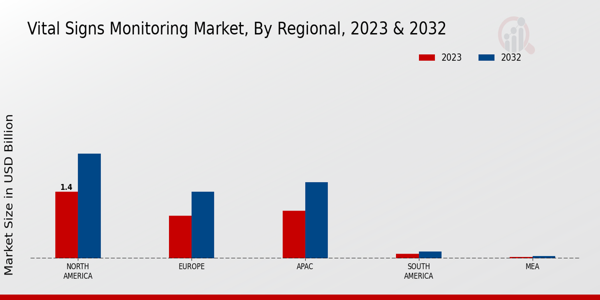Market Analysis
In-depth Analysis of Vital Signs Monitoring Market Industry Landscape
Technological advancements, rising incidence of chronic diseases, and increasing remote patient monitoring are some of the dynamic trends shaping the vital signs monitoring market. Technological innovation has been identified as one of the major drivers influencing dynamics within this sector, which is commercialized through advancing devices such as wearable sensors, smart patches, wireless medical monitors, etc., which have emerged, thereby changing this field drastically. The growth and dynamics of the vital signs market are shaped by the increased prevalence of chronic diseases coupled with an aging population. A rise in chronic conditions such as cardiovascular complications, respiratory infections, and diabetes has correspondingly called for constant non-invasive monitoring systems. Regulating factors are the chief influencer of the dynamics of the vital signs market. Monitoring systems should meet strict regulations and standards to ensure dependable, accurate, and safe outcomes. The shift towards value-based and patient-centered healthcare has further impacted the dynamics of the vital signs monitoring market. In this case, therefore, knowing what is happening in a patient's body remotely through their vital signs data as enabled by technology is a great boon for proactive care. Other than these criteria, economic considerations and healthcare reimbursement policies also affect market dynamics. Healthcare providers' adoption of vitality signs monitoring systems depends on their cost effectiveness as well as the reimbursement landscape. Reimbursement policies are a factor that influences whether technological acceptance or utilization goes up or down, thereby shaping global market trends at large. To be easily integrated with healthcare systems, these devices need to be convenient and cost-effective enough, respectively. Competition between the main industry players drives the dynamics of the vital signs monitoring market. Firms try to differentiate their products by adding features such as accuracy, connectivity, user-friendliness, and compatibility with other health systems. For example, sensor technologies are being improved through research and development while data analytics capabilities are also enhanced along with other applications for monitoring these vital signs. The COVID-19 pandemic has affected the dynamics of the vital signs monitoring market by highlighting the importance of remote monitoring and telehealth solutions. Due to a 400% increase in telehealth users within a week since March 15th, remote patient management measures have witnessed increased deployment of vital signs monitoring technologies.












Leave a Comment